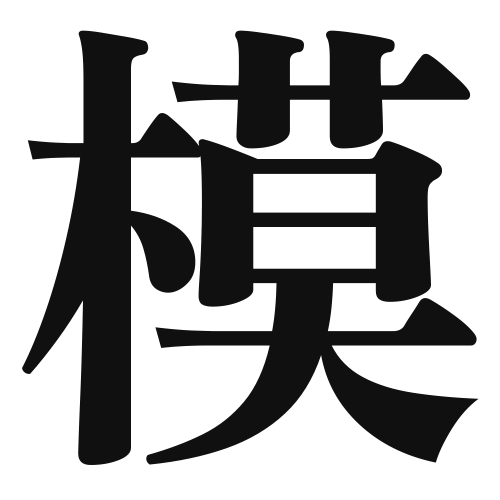1. Overview of Meaning
The kanji “模” (mo) generally means “pattern,” “model,” or “mold.” It refers to a representation or imitation of something, often used in contexts related to design or imitation.
2. Formation and Radical
Formation of the Kanji: The kanji “模” is a compound character (会意文字) that combines elements to convey its meaning. It consists of the radical “毛” (hair) which often relates to texture or surface, and “莫,” which contributes to the overall meaning of imitation or pattern.
Radical: The radical of “模” is “毛,” which signifies hair or fur, often associated with surface characteristics.
3. Examples of Usage
Common Words and Phrases: Some frequently used words that include “模” are “模様” (moyou – pattern), “模倣” (mohou – imitation), and “模型” (mokei – model).
Example Sentences in Daily Conversation:
- この布の模様はとても美しいです。 (Kono nuno no moyou wa totemo utsukushii desu.) – The pattern on this fabric is very beautiful.
- 彼はその絵を模倣しました。 (Kare wa sono e o mohō shimashita.) – He imitated that painting.
4. Synonyms and Antonyms
Similar Kanji: A similar kanji is “型” (kata), which also means “type” or “model,” but it often refers to a specific form or shape rather than a pattern.
Opposite Kanji: An antonym could be “独自” (dokuji), meaning “original” or “unique,” which contrasts with the idea of imitation or pattern.
5. Cultural and Historical Background
Relation to Japanese Culture: The concept of “模” is significant in Japanese culture, especially in arts and crafts, where patterns and designs play a crucial role in aesthetics.
Proverbs and Idioms: An example of an idiom is “模倣は創造の母” (Mohō wa sōzō no haha), which translates to “Imitation is the mother of creation,” highlighting the importance of learning through imitation in the creative process.
